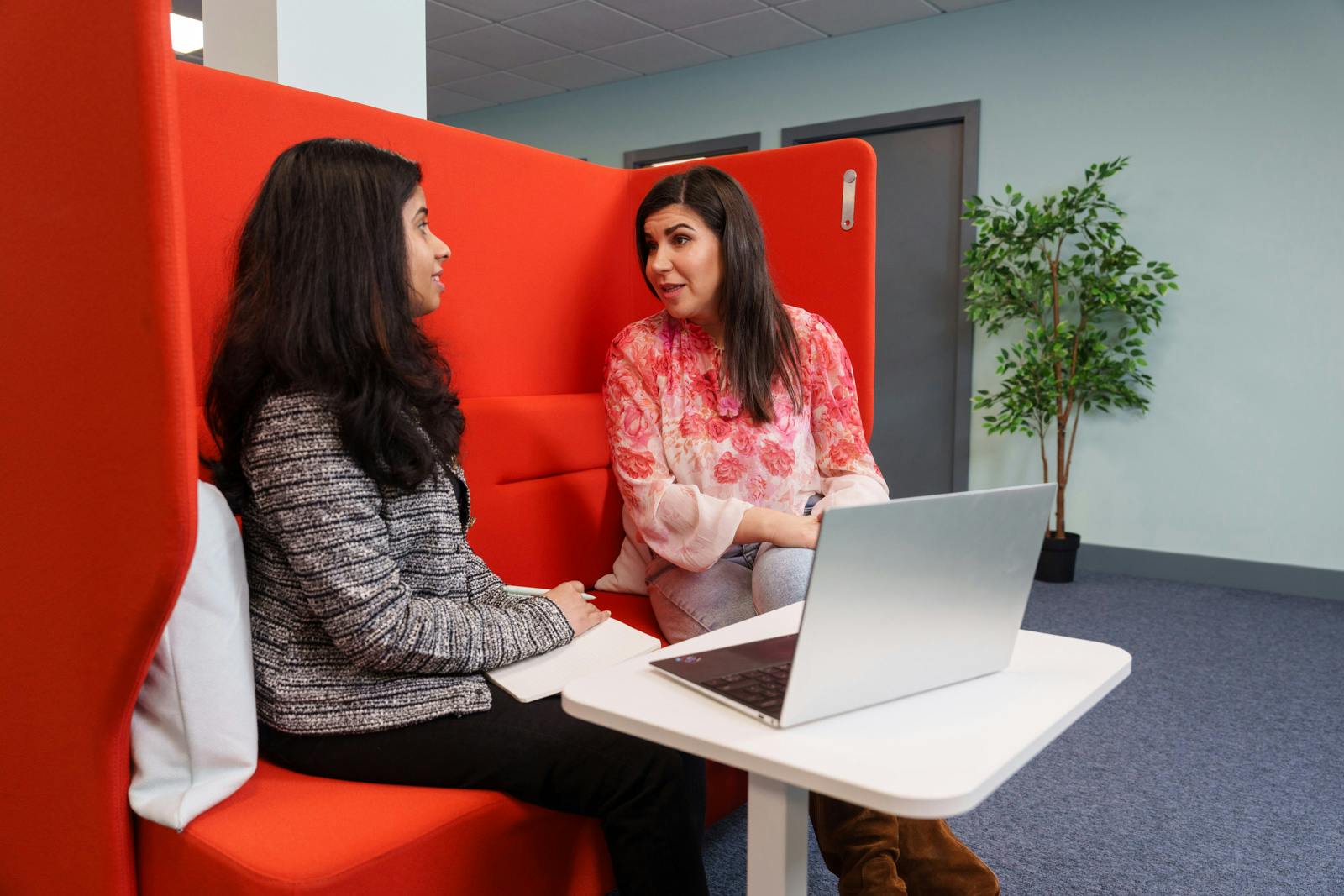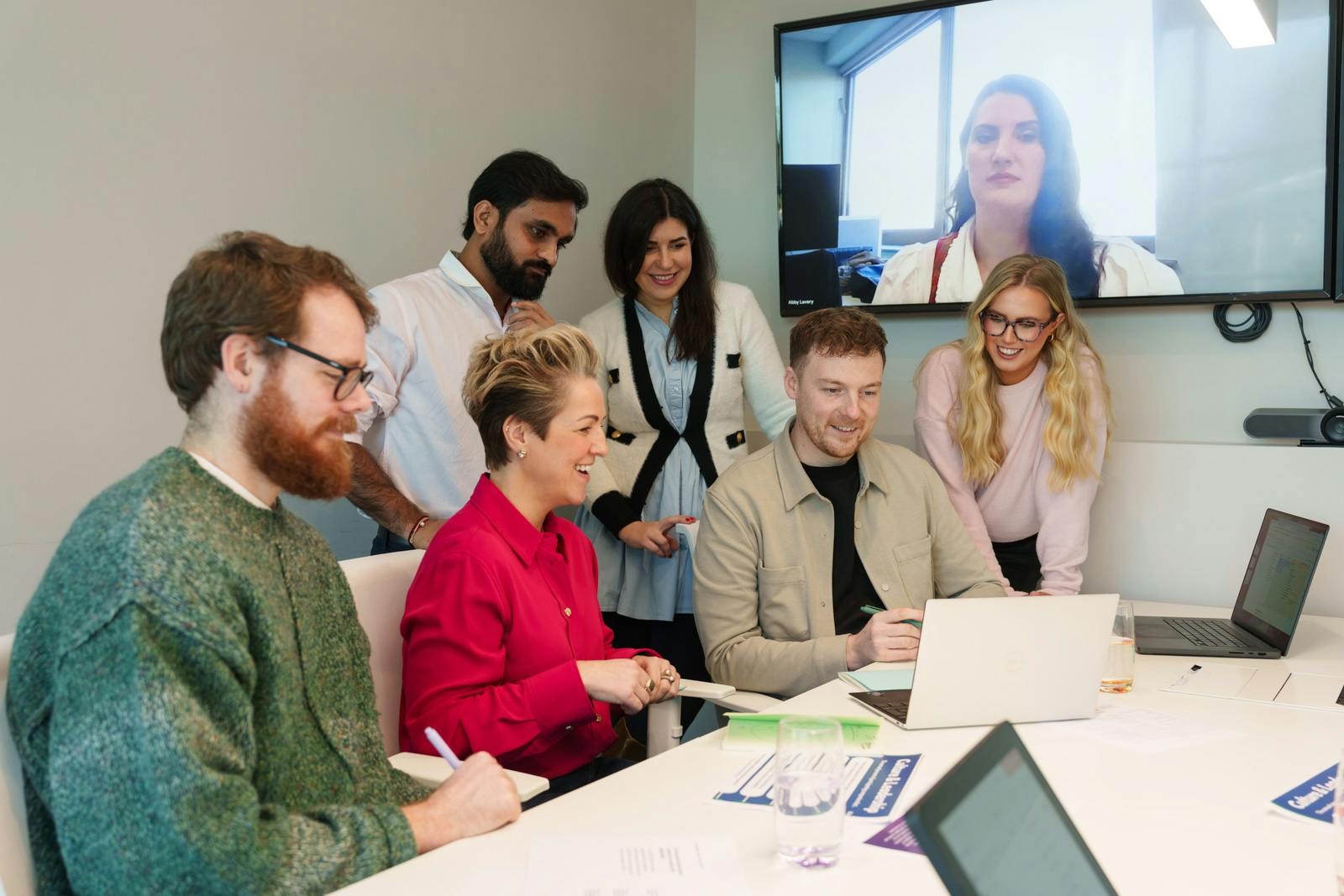Neuroinclusion in recruitment and beyond
Your guide to attracting, recruiting, and retaining neurodivergent talent.
Don’t forget to bookmark this guide.
Book a chat with our neuroinclusion specialist.
Neuroinclusive recruitment and why it matters
What is neuroinclusive recruitment?
Neuroinclusive recruitment is a way of recruiting that recognises, understands, and values neurodiversity, at every stage of the recruitment process. It’s designed to create a fair and accessible experience, from first contact to onboarding, by adapting to different communication and cognitive needs.
It removes barriers and bias, which is especially important for neurodivergent job candidates. And, done properly, it unlocks the potential to reach highly capable individuals who think differently to everyone else.


Why neuroinclusive recruitment matters
Neuroinclusive recruitment helps to open up companies and attract job candidates from a wider pool of talent. With a focus on the things that truly matter, like skills and abilities over social norms, it helps recruit the right person for the right job.
Of the many businesses that champion neuroinclusion, 30% report higher profit margins compared with their peers.
Despite this, unemployment rates are still high among neurodivergent people. In fact, 85% of autistic people and 4 in 10 people with Dyslexia are out of work. That’s a vast pool of untapped talent and a whole load of missed opportunities for businesses that want to drive innovation and growth.
1 in 5
people are neurodivergent with a neurotype such as dyslexia, autism and ADHD.
34% of people
have experienced difficulty in recruitment and interview processes.
43% of potential candidates
have felt discouraged from applying because of the job application processes.
52% of candidates
claim to have experienced discrimination during interview or selection processes.
Recruiting and hiring neurodivergent talent

Be accessible and welcoming to everyone
Every candidate should be able to access, understand, and complete their job application without barriers. A recruitment process experience should be a welcoming one, for everyone involved.
Here are some ways you can make your job application and recruitment process more inviting and easier to engage with.
The job description: your words really matter
Write your job description in a way that focuses on the specific skills needed
Job specifications can sometimes state that candidates must, for example, have ‘excellent communication’ or ‘good problem solving’ skills. But this type of approach can often prevent people from applying.
So when you’re writing your next job description, ask yourself, “What skills are really needed for this role?” and stick to the facts. Think about the outcome and position yourself as an employer who empowers its people to succeed by just being themselves.
Write your job description in a way that focuses on the specific skills needed
Job specifications can sometimes state that candidates must, for example, have ‘excellent communication’ or ‘good problem solving’ skills. But this type of approach can often prevent people from applying.
So when you’re writing your next job description, ask yourself, “What skills are really needed for this role?” and stick to the facts. Think about the outcome and position yourself as an employer who empowers its people to succeed by just being themselves.
Your advertising platform is important
It’s important to choose an accessible platform
Use a recruitment platform that meets Web Content Accessibility Guidelines (WCAG) standards. They set out the international standards for making web content more accessible. Not just for people with disabilities but for all users.
By advertising on an accessible website, everyone – including neurodivergent applicants and those using screen readers – will be able to apply for your job. It’s really important to consider everyone when choosing where to post your job ad. It’s about opening doors, not closing them.
“You need to make sure that you’re not inadvertently going on a jobs board that’s inaccessible…There’s some specialist job boards such as Evenbreak, which we know are fully accessible and we know have that diversity reach.”
Kate Headley, Director, The Clear Company
It’s important to choose an accessible platform
Use a recruitment platform that meets Web Content Accessibility Guidelines (WCAG) standards. They set out the international standards for making web content more accessible. Not just for people with disabilities but for all users.
By advertising on an accessible website, everyone – including neurodivergent applicants and those using screen readers – will be able to apply for your job. It’s really important to consider everyone when choosing where to post your job ad. It’s about opening doors, not closing them.
“You need to make sure that you’re not inadvertently going on a jobs board that’s inaccessible…There’s some specialist job boards such as Evenbreak, which we know are fully accessible and we know have that diversity reach.”
Kate Headley, Director, The Clear Company
Meeting diverse needs with flexibility

"Organisations are now challenging the traditional recruitment process of CVs followed by interviews. CVs give you historical information about the privilege that somebody has had. So if you’re disabled and you’ve been discriminated against, you won’t have had the work opportunities that make your CV look good. Not because you don’t have the talent, but because of discrimination….”
Jane Hatton CEO & Founder, Evenbreak
A neuroinclusive interview and selection process should recognise and be flexible to different needs.
It’s important to ask candidates if they need any reasonable adjustments. Instead of asking them to disclose or declare a disability – that’s a matter of choice – ask if there’s any support or reasonable adjustments you can offer that’ll help make the recruitment process a more positive one.
Talk to candidates in a way that works best for them
As well as asking neurodivergent job candidates what support they need, ask them how they want to be communicated with. For some, information is easier to process when it’s in writing. For others, a verbal conversation works best. Remember: one size doesn’t fit all. So be sure to let your candidates take the lead on this.
Getting rid of systemic bias
That means bias that has been built into normal ways of working. Things like systems, rules, processes, and so on. Systemic bias generally goes unnoticed, but by putting policies in place that support neurodiverse employees – not just at the recruitment stage but during an employee’s entire workplace journey – you’re covering yourself from a legal and reputational perspective, too.

Getting rid of systemic bias
That means bias that has been built into normal ways of working. Things like systems, rules, processes, and so on. Systemic bias generally goes unnoticed, but by putting policies in place that support neurodiverse employees – not just at the recruitment stage but during an employee’s entire workplace journey – you’re covering yourself from a legal and reputational perspective, too.

Onboarding with neuroinclusion in mind
Tips to support neuroinclusive onboarding
Two-thirds of neurodivergent individuals don’t disclose they’re neurodivergent in the workplace.
A neuroinclusive onboarding process helps employees feel included in their new place of work. It also ensures they have the tools needed to succeed in their new role, right from the start. So set the tone and signal to all employees that they are welcomed, valued and supported, whether neurodivergent or neurotypical.
Become an employer of choice

Top tips for promoting your employer brand
As many as 76% of job seekers consider workplace neuroinclusion an important factor when thinking about employment opportunities.
Given that’s so high, it’s important you demonstrate your commitment to neuroinclusion. You’ll be showing prospective candidates what it’s like to work in your organisation. And if it’s talent you’re looking for, ideally you want it to come to you.
Be transparent in how you support your employees
- Showcase how proactive you are in neuroinclusive practices and talk boldly and openly about it.
- Share stories of how diverse your workforce is, with genuine examples.
- Demonstrate the actions you take to support and include all employees.
- Make neuroinclusion a viable business goal.
Partner with organisations and schemes for help
There’s so much support out there to help us all improve. For example, the Business Disability Forum, and Investors in People accreditation.
Not to mention government schemes like the Disability Confident Scheme (UK). Get advice, get involved, and keep the learning curve in an upward trend.
Make neurodiversity a clear business goal
Don’t be afraid to share what the future of neuroinclusion looks like for your organisation. Be honest about the challenges but remember to shout about the successes.
Neuroinclusion isn’t a one-off initiative, it’s a shift in mindset. By designing a recruitment process that welcomes neurodivergent candidates, you’ll unlock fresh perspectives, drive business innovation, and build a stronger, fairer working environment.
Neuroinclusion tools to support your employees
We understand that everyone works differently. The way we read, write, think, and communicate is unique to each and everyone of us.
That’s why we create technology that makes workplace communication easier, digital content more accessible, and work environments more supportive. So that everyone can understand and be understood.
Reading and writing tools to support neuroinclusive workplaces and empower every employee to excel at work.
Web accessibility software to improve the accessibility, readability and reach of your online content.
Talk to an expert
Are you ready to make your organisation more neuroinclusive?
Talk to one of our workplace experts about how you can use our tools to support your working environment.


















